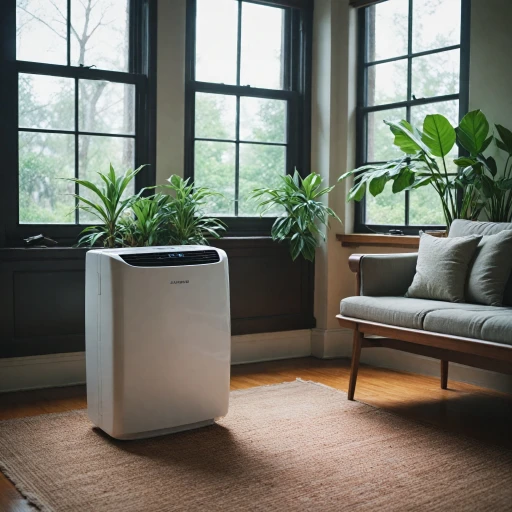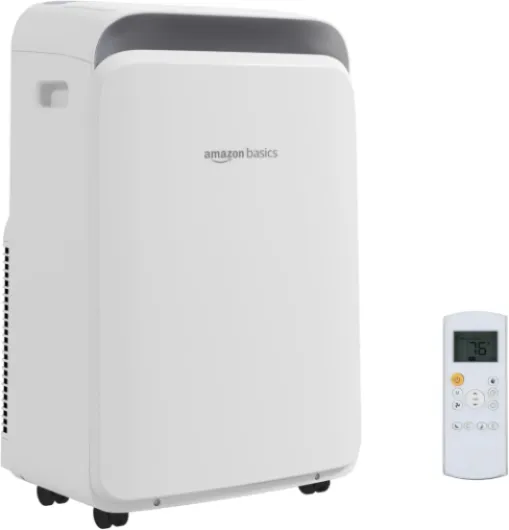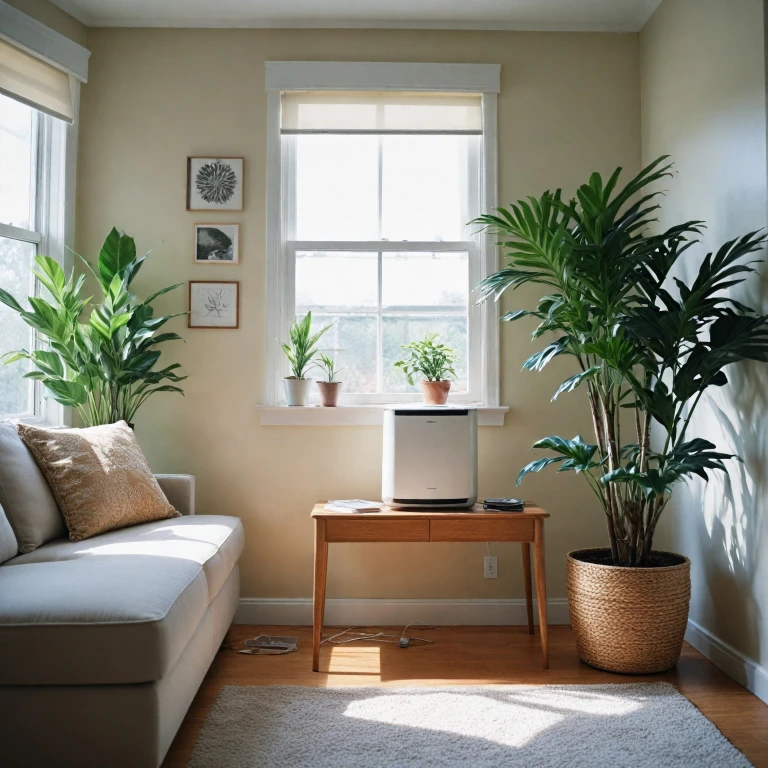Understanding Compact Portable AC Units
Decoding the World of Small Cooling Units
When navigating the myriad of small cooling devices on the market, it's crucial to understand what compact portable air conditioners offer. Unlike traditional systems, these models are more flexible, easy to install, and can fit snugly into any space needing that extra burst of cool air. Perfect for those dealing with limited areas, these units manage to provide efficient cooling power where conventional systems may fall short.
Compact units are defined by their standout features such as maneuverability and versatility. Depending on the model and its specific attributes, such as dual hose or single hose configurations, these conditioners can address specific cooling demands. The Black Decker model, for example, is famed for its robust power and ease of use, and it comes highly recommended in situations where a small room or space needs immediate cooling. However, when selecting the best option, remember to align the unit's capacity with your room size. SACC BTU ratings are an essential guide to understanding a unit's actual cooling power.
For those new to portable air conditioning, focus on selecting a unit that promises both efficient operation and good air quality. These compact devices are often equipped with remote control capabilities, simplifying their operation. Additionally, some may incorporate a heat pump for year-round functionality, delivering warmth as efficiently as they provide cold air during the warmer months. Researching and comprehending these factors is key to making an informed purchase.
For more nuanced details, consider how energy efficiency and environmental factors can impact your choice. Different models are designed with variations in hose configurations, and understanding whether a dual hose or single hose system is suitable can greatly affect a unit's cooling efficiency. To dive deeper into these specific features, visit
Choosing the Right Compact Portable Air Conditioner for Your Space for comprehensive insights.
Key Features to Look For
Must-Have Attributes for Optimal Performance
When selecting your compact portable AC unit, understanding the essential features can greatly enhance your cooling experience. While the models on the market are diverse in functionality and design, focusing on some key aspects will help you make the best decision.
- BTU Rating: The British Thermal Units (BTU) rating determines how much cooling power the air conditioner provides. A higher BTU means more powerful cooling, which is ideal for larger spaces. For small rooms, a lower BTU portable model may suffice. Consider the SACC BTU rating as well, which gives a more accurate measure of a unit's performance considering environmental factors.
- Dual Hose vs. Single Hose: Dual hose models generally provide better cooling efficiency by using one hose to exhaust warm air and another to draw in fresh air. Single hose units, while often more budget-friendly, may not be as efficient in larger spaces as dual hose models.
- Energy Efficiency: Utilizing inverter technology can improve energy efficiency and power consumption. Look for models with an efficient Energy Star rating to ensure you're getting a cost-effective and environmentally friendly option that reduces gas emissions.
- Portability and Design: Opt for compact, design-forward models that blend seamlessly into any room decor. Look for lightweight models that are easy to move while ensuring they don’t compromise on cooling capabilities.
- Additional Features: Remote controls offer convenience, allowing you to adjust settings from anywhere in the room. Models with heat pumps can provide year-round use, delivering both cool air in the summer and warm air during winter.
- Cost vs. Benefits: Higher price points might correlate with more features and a stronger performance. However, it is essential to map out your budget and prioritize features that best match your lifestyle needs and cooling requirements.
To explore more about the nuances between different models and their effectiveness, check out this comprehensive guide on
choosing the right personal AC unit to ensure you make a well-informed decision.
Sizing Your AC Unit Correctly
Sizing Matters: How to Choose the Right Capacity
Selecting the appropriate size for your compact portable air conditioner is crucial for efficient cooling and cost-effective operation. The unit's cooling capacity is often measured in British Thermal Units (BTUs), which indicates the amount of cool air it can produce. Choosing a model that matches the size of your room ensures optimal performance.
Consider the following aspects when sizing your AC unit:
- Room Size and BTUs: To determine the right BTU for your space, measure your room's square footage. As a rule of thumb, a 150 square foot room may require a 5,000 BTU portable air conditioner, while larger rooms around 400 square feet might need at least a 10,000 BTU unit. Consult a BTU sizing chart for more precise calculations based on room dimensions and additional factors like ceiling height and window size.
- Single Hose vs. Dual Hose: Though single hose models are more compact and usually less expensive, dual hose air conditioners are typically more powerful, making them more efficient for larger rooms.
- Efficiency and Cost: Smaller units may cost less upfront, but if they aren't powerful enough for your room, they may work harder and increase energy bills. Evaluating energy efficiency ratios and power consumption can guide you in finding a balance between size and operating cost.
By carefully considering these factors, you ensure that your portable air conditioner delivers the best cooling performance for your needs while maintaining energy efficiency and keeping costs under control.
Energy Efficiency and Environmental Impact
Maximizing Energy Efficiency in Portable AC Units
When selecting a compact portable air conditioner, energy efficiency is a crucial factor to consider. Not only does it impact your electricity bills, but it also affects the environment. Here are some key aspects to keep in mind:
- Energy Efficiency Ratio (EER): This is a measure of how efficiently a portable air conditioner uses electricity to cool a room. A higher EER indicates a more efficient unit. Look for models with an EER of 10 or above for the best performance.
- Inverter Technology: Inverter air conditioners adjust the power used to maintain the desired temperature, which can lead to significant energy savings. This technology is often found in more advanced models and can be worth the higher initial price.
- Dual Hose vs. Single Hose: Dual hose models are generally more efficient than single hose units. They use one hose to draw in air from the outside and another to expel warm air, reducing the strain on the unit and improving cooling efficiency.
- BTU and SACC Ratings: The British Thermal Unit (BTU) rating indicates the cooling capacity of the air conditioner. The Seasonally Adjusted Cooling Capacity (SACC) is a newer metric that provides a more accurate measure of a unit's efficiency over a season. Consider both when evaluating a model's efficiency.
Environmental Considerations
Choosing an energy-efficient portable air conditioner also means considering its environmental impact. Here are some points to consider:
- Refrigerant Type: Modern air conditioners use more environmentally friendly refrigerants like R-32, which have a lower global warming potential compared to older gases.
- Energy Star Certification: Look for units with the Energy Star label, which signifies that the product meets strict energy efficiency guidelines set by the U.S. Environmental Protection Agency.
- Smart Features: Some models come with smart technology that allows you to control the unit remotely via a smartphone app, optimizing energy use based on your schedule.
By focusing on these features, you can select a portable air conditioner that not only cools your room effectively but also minimizes energy consumption and environmental impact.
Installation and Maintenance Tips
Installing Your Compact AC and Keeping It Running Smoothly
When you bring home that shiny new compact portable AC unit, proper installation and maintenance are key to getting the most out of your investment. These indispensable machines, like the highly-rated Black Decker or any dual hose models, require positioning that maximizes their efficiency, whether it's for cooling a small room or maintaining air quality in a larger space.
Firstly, select an optimal location for setup, ensuring the model is close to a window. This will allow for the easy attachment of the exhaust hose, which is crucial for venting out warm air. A single hose unit may be simpler to install but note that a dual hose setup typically offers more efficient operation by minimizing the mix of cooled and expelled air.
For best performance, ensure the conditioner is level and has a clear path for air flow. Avoid cluttering the vicinity with objects that might obstruct the air intake or exhaust. This setup allows the unit to utilize its BTU power to its fullest potential, smoothly cooling the intended area.
Routine maintenance involves tasks as straightforward as frequently checking and cleaning the filters. Dirty filters can compromise the airflow and reduce efficiency, leading to increased energy consumption and diminished cooling power. A quick cleanse every few weeks can subvert this issue.
Additionally, inspect the exhaust hose for any blockages or damage. A well-kept hose is vital for optimizing venting capability, which helps the conditioner cool air efficiently and effectively.
Lastly, keep in mind that some models, like those with an advanced inverter for heating cooling capabilities, adhere to eco-friendly standards. These models are designed to minimize power consumption, supporting not only personal comfort but also environmental sustainability.
Incorporating these straightforward installation and upkeep practices will ensure that your portable air conditioner remains a powerful, efficient addition to your home climate control routine.
Comparing Top Models on the Market
Evaluating Premier Portable AC Units on the Market
When it comes to choosing the best compact portable air conditioner for your specific needs, the market offers a plethora of models. This can make the task overwhelming. It's crucial to compare the features, efficiency, and pricing of the top contenders to make an informed decision. Let's delve into some of the leading models based on power, efficiency, and price range:
- Black Decker BPACT08WT: This model boasts a 8,000 BTU capacity, ideal for cooling small rooms up to 150 square feet. It's a single hose conditioner, providing efficient cooling with minimal warm air return. Additionally, it includes a remote control for easy adjustment, making it a convenient choice for users seeking simplicity.
- Whynter ARC-14S: Ranked as one of the most powerful and efficient models, this dual hose system provides 14,000 BTU cooling power. Suitable for rooms up to 500 square feet, it's perfect for larger spaces. It also comes equipped with a heat pump function, adding versatility to its features.
- LG LP1419IVSM: Featuring inverter technology, this portable air conditioner is reputed for its energy-saving capabilities. It adapts its cooling power (up to 14,000 BTU) according to the room's needs, ensuring optimal air quality and efficient cooling. This model is also known for its quiet operation.
- Frigidaire FHPC082AC1: This compact yet robust conditioner offers 8,000 BTU cooling, making it perfect for small room applications. It is well-reviewed for its affordability and effective cooling map for small spaces.
When comparing these units, consider the room size you need to cool, your environmental preferences, and the specific features that are most important to you. Remember, while dual hose models often provide superior cooling efficiency, single hose options offer a simpler setup and lower price point. Always prioritize the balance between price, power, and efficiency to ensure you select the conditioning unit that best fits your space and lifestyle.




